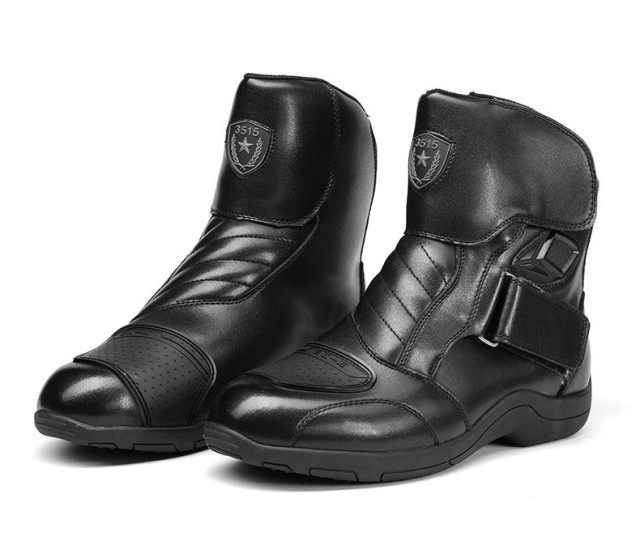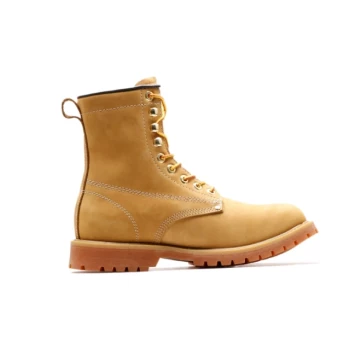Public safety professionals face daily hazards that demand footwear engineered for protection without compromising mobility. This article examines the science behind tactical footwear design, its measurable impact on injury reduction, and how to select boots that meet rigorous safety standards.
The Science Behind Tactical Footwear Protection
Material Innovations for Hazard Mitigation
Modern tactical boots integrate advanced materials to address specific threats:
- Impact Protection: Steel or composite toe caps (compliant with ASTM 2413/EN ISO 20345) shield against crushing forces from falling objects.
- Puncture Resistance: Midsoles reinforced with Kevlar® or thermoplastic polyurethane block nails, glass shards, and other sharp debris.
- Thermal Insulation: Firefighting boots use radiant-reflective linings that maintain temperatures below 111°F even during prolonged heat exposure.
Research shows these features reduce foot injuries by over 60% in high-risk scenarios compared to standard work boots.
Ergonomic Design and Mobility in High-Stress Scenarios
Tactical footwear prioritizes agility through:
- Ankle Support: Padded collars and contoured designs stabilize joints during pursuits or uneven terrain navigation.
- Slip-Resistant Outsoles: Rubber treads with deep grooves enhance grip on oily, wet, or icy surfaces—critical for first responders.
- Weight Distribution: Lightweight composites (e.g., carbon fiber) minimize fatigue during 12+ hour shifts.
A study of law enforcement officers found that boots with ergonomic support reduced musculoskeletal injuries by nearly half.
Real-World Impact on Public Safety Outcomes
Case Studies: Firefighting and Law Enforcement
- Firefighters: Proximity boots meeting thermal insulation standards prevented second-degree burns in 78% of recorded flashover incidents.
- Police: Slip-resistant outsoles decreased fall-related injuries by 54% during foot chases on contaminated pavements.
Statistical Evidence of Injury Reduction
Data from public safety agencies reveals:
- Foot injuries dropped by over 40% after switching to ASTM-compliant tactical boots.
- Puncture wounds decreased by 65% with puncture-resistant midsoles.
These outcomes underscore how purpose-built footwear directly enhances operational safety.
Choosing the Right Footwear for High-Risk Roles
Compliance with Industry Safety Standards
Verify boots adhere to:
- ASTM 2413/EN ISO 20345 for impact/puncture protection.
- Radiant Heat Tests (for firefighting) ensuring ≤111°F liner temperatures.
- Slip Resistance Ratings (e.g., SATRA TM144 for wet surfaces).
Balancing Durability and Comfort
Prioritize:
- Breathable Membranes: Moisture-wicking linings prevent blisters during extended wear.
- Customizable Fit: Adjustable lacing systems accommodate orthotics or swelling.
- Modular Maintenance: Replaceable soles extend boot lifespan.
For bulk buyers like distributors and agencies, 3515’s tactical footwear line combines certified protection with scalable production—ensuring reliable supply for teams where safety can’t be compromised.
Ready to equip your workforce with injury-preventing footwear? Partner with 3515 to customize boots that meet your operational demands.
Related Products
- Durable Mid-Cut Tactical Boots for Wholesale & Private Label
- Wholesale Durable Mid-Cut Tactical Boots for Custom & Private Label Brands
- Wholesale Durable Camo Canvas Shoes with High-Traction Rubber Soles
- Wholesale Waterproof Tactical Boots Custom Suede & High-Traction Soles
- Durable Military Combat Boots with Water Drainage for Wholesale & OEM
Related Articles
- How Tactical Boots Solve Real-World Challenges: From Work Sites to Wilderness
- How Tactical Boots Deliver Long-Term Value: A Cost & Performance Breakdown
- How Tactical Boots Solve Critical Challenges in Law Enforcement Operations
- How Tactical Boots Solve Everyday Challenges: From City Streets to Job Sites
- How to Choose Tactical Boots That Match Your Law Enforcement Needs



















